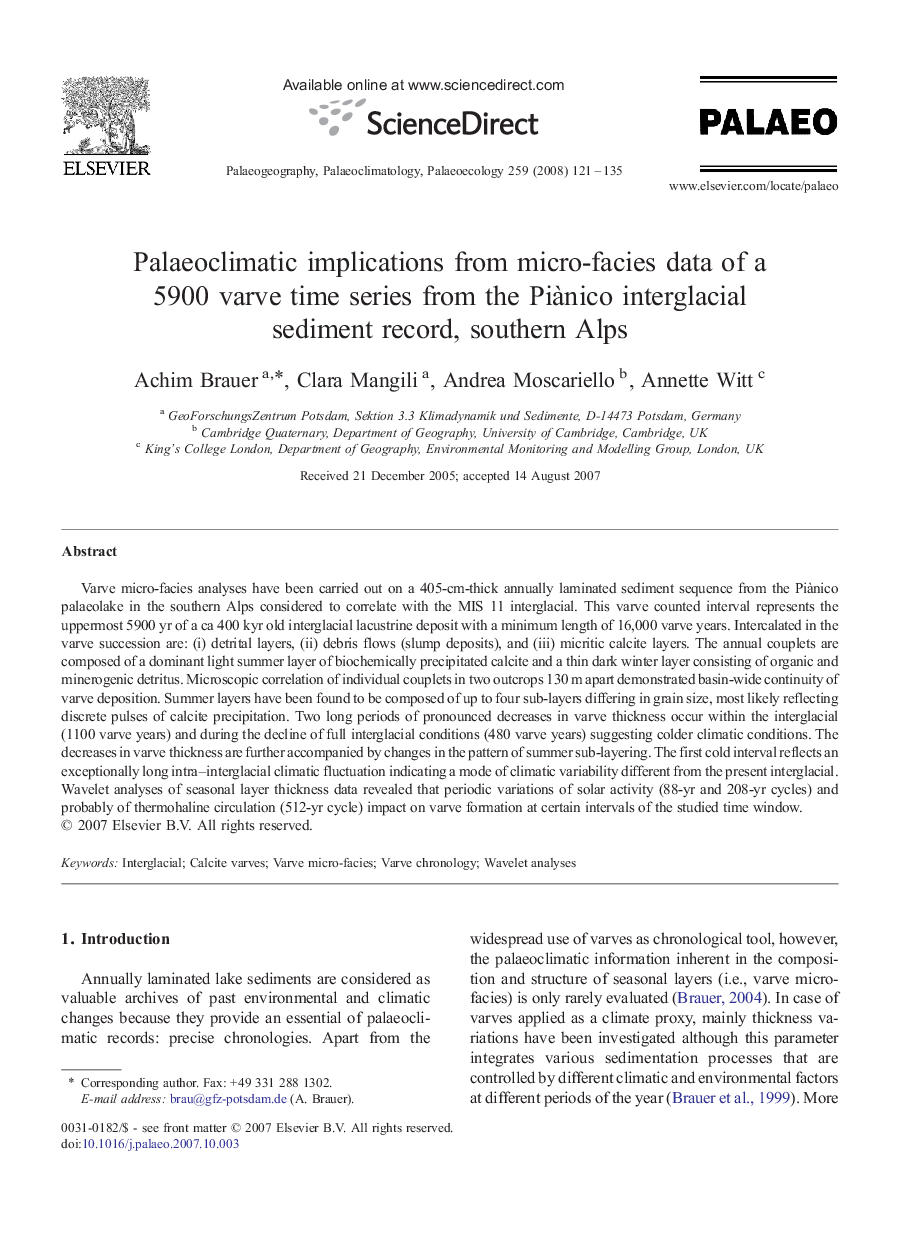| Article ID | Journal | Published Year | Pages | File Type |
|---|---|---|---|---|
| 4468643 | Palaeogeography, Palaeoclimatology, Palaeoecology | 2008 | 15 Pages |
Varve micro-facies analyses have been carried out on a 405-cm-thick annually laminated sediment sequence from the Piànico palaeolake in the southern Alps considered to correlate with the MIS 11 interglacial. This varve counted interval represents the uppermost 5900 yr of a ca 400 kyr old interglacial lacustrine deposit with a minimum length of 16,000 varve years. Intercalated in the varve succession are: (i) detrital layers, (ii) debris flows (slump deposits), and (iii) micritic calcite layers. The annual couplets are composed of a dominant light summer layer of biochemically precipitated calcite and a thin dark winter layer consisting of organic and minerogenic detritus. Microscopic correlation of individual couplets in two outcrops 130 m apart demonstrated basin-wide continuity of varve deposition. Summer layers have been found to be composed of up to four sub-layers differing in grain size, most likely reflecting discrete pulses of calcite precipitation. Two long periods of pronounced decreases in varve thickness occur within the interglacial (1100 varve years) and during the decline of full interglacial conditions (480 varve years) suggesting colder climatic conditions. The decreases in varve thickness are further accompanied by changes in the pattern of summer sub-layering. The first cold interval reflects an exceptionally long intra–interglacial climatic fluctuation indicating a mode of climatic variability different from the present interglacial. Wavelet analyses of seasonal layer thickness data revealed that periodic variations of solar activity (88-yr and 208-yr cycles) and probably of thermohaline circulation (512-yr cycle) impact on varve formation at certain intervals of the studied time window.
